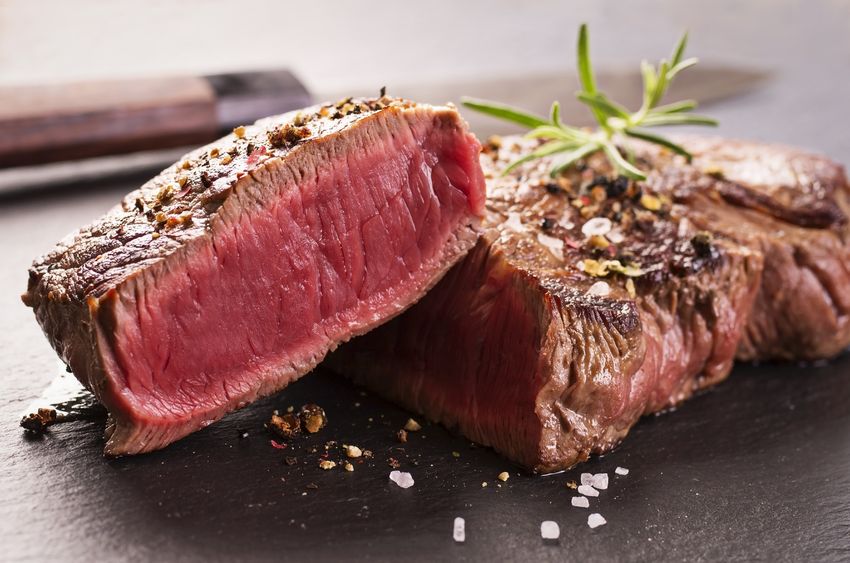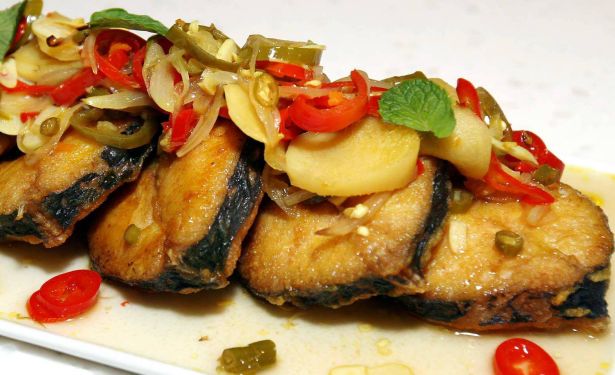A good piece of grilled steak is one of the simplest meals you can make, yet many people worry endlessly about how to cook it properly.
Here are my top 10 tips, some of which might seem obvious, but believe me, they will all help you understand how to cook the perfect steak.
- Buy the best quality meat that you can afford. That way you get a head start when it comes to flavour and texture. Choose the right cut. For instance, if you like your steak butter-soft, choose a piece of eye-fillet; if you want super-tasty and don’t mind a bit of a chew, choose rump, skirt or hangar. Steaks come in all shapes and sizes, so there is no perfect formula for timing. For instance, a 250g steak that is flat and thin will cook more quickly than a 250 g steak that is thick. See Point 9 to learn about testing for doneness.
- Don’t cook your steak straight from the fridge. Let it come to room temperature about 30 minutes before you plan to eat.
- Prepare for cooking by rubbing the steak all over with a little olive oil. Use your hands to smear it on evenly, then season the meat with salt and pepper just before you put it on the grill. Both the oil and seasoning will help stop the meat from sticking to the grill. They’ll help seal the surface and ensure that it caramelises to a lovely deep brown, which will make it taste better, too.
- You can cook steaks on the barbecue, on a ridged griddle pan, or in a frying pan (I don’t really recommend cooking steak under an overhead grill). Each has its own merit, although each is slightly different. At the restaurant we cook our steaks on a massive flame-grill, so the steaks get a wonderful lightly charred flavour. You will achieve a similar result at home using a barbecue.
- I also like cooking steaks in griddle pans because they can be heated to a high temperature and you get attractive stripe markings from the ridges. If you prefer to fry your steaks in a frying pan, then make sure you use only the barest minimum of oil or they run the risk of being a bit too greasy. And of course you won’t get any attractive griddle markings from a flat surface either.
- Ideally you want to be able to create a range of temperatures from very hot to medium-hot, which is dead easy on the barbecue, and less easy with a griddle or frying pan. Why is it important? Well, it’ is particularly important with a big thick piece of meat that is going to take longer to heat to the centre. With a thin piece of meat you can cook it over a fierce heat very quickly. With a big thick piece it is likely to burn on the outside before the heat penetrates to the centre. With big thick steaks you want to move the steak to a medium heat after the initial searing over a high heat. Alternatively, transfer it to the oven to finish cooking after the initial searing.
- Which brings us to turning. Some people insist that you should only turn your steak once during the cooking process. I like to turn my steaks between three and five times depending on the thickness. I find that this way the meat cooks evenly and ends up tender and juicy inside. I actually turn the meat at right-angles, which means you get an attractive cross-hatching of griddle marks. Here’s what actually happens when the steak is cooking: immediately the meat hits the heat, the moisture inside rushes away from the heat source up to the surface of the meat where it eventually cooks away. When you turn the steak over, the moisture rushes back in the other direction. If you turn the meat several times as it cooks, less moisture will escape and your steak will stay lovely and juicy in the centre.
- Testing for doneness is another bugbear for people. This is something that you learn through practice and you will become more confident over time. Many experts warn against cutting into the steak to see how the steak looks, but if you’re a novice cook, then this is a straightforward approach. You do run the risk of losing some of the internal juices, so I suggest you move the steak off the heat and leave it to rest for 2 to 3 minutes before making a small incision into the thickest part of the meat.
- A far better way to test for doneness is to press the steak with your finger. Essentially, the more yielding the steak is under pressure, the rarer the steak. Some people use the little trick of feeling the fleshy base of your thumb as you touch it to the fingers on your hand: thumb to index finger = rare; thumb to middle finger = medium-rare; thumb to ring finger = medium to medium-well; thumb to little finger = well done. To be honest, one sure-fire way of knowing how well cooked your steak is, is to use a meat thermometer and I strongly recommend using one of these until you gain confidence in your own judgment. At La Luna I have a big notice stuck above the grill to remind the chefs about internal core temperatures. 35°C = rare; 45°C = medium-rare; 55°C = medium; 65°C = medium-well; 75°C = well-done. The beauty of this method is that it removes all the guesswork.
- Finally, and perhaps most importantly of all, once the steak is cooked, you must rest it. As I’ve outlined above, while the meat is cooking, the moisture inside heats up and moves away from the heat source. There’s a lot of activity going on inside that piece of meat! Letting it rest away from the heat source allows the juices to settle back to the centre of the meat and the fibres will all relax, becoming nice and tender. As a simple rule of thumb, allow an equal amount of resting time as the meat took to cook. So in other words, if the steak took 4 minutes to cook, allow it to rest in a warm spot for 4 minutes before serving. You can always put it back on the heat for a final warm through. 30 seconds on each side should be enough.
Chef Adrian Richardson is the owner and head chef of the successful and bustling La Luna, one of Melbourne’s best Mediterranean bistros in North Carlton, where he has been serving up clean, fresh and innovative food since 1999.





